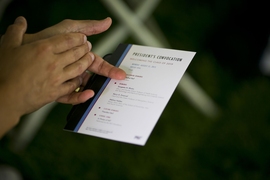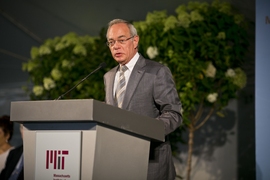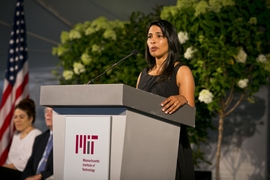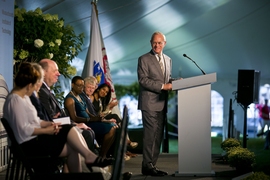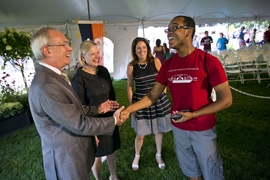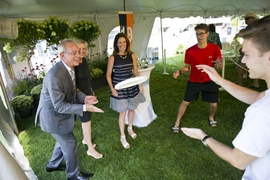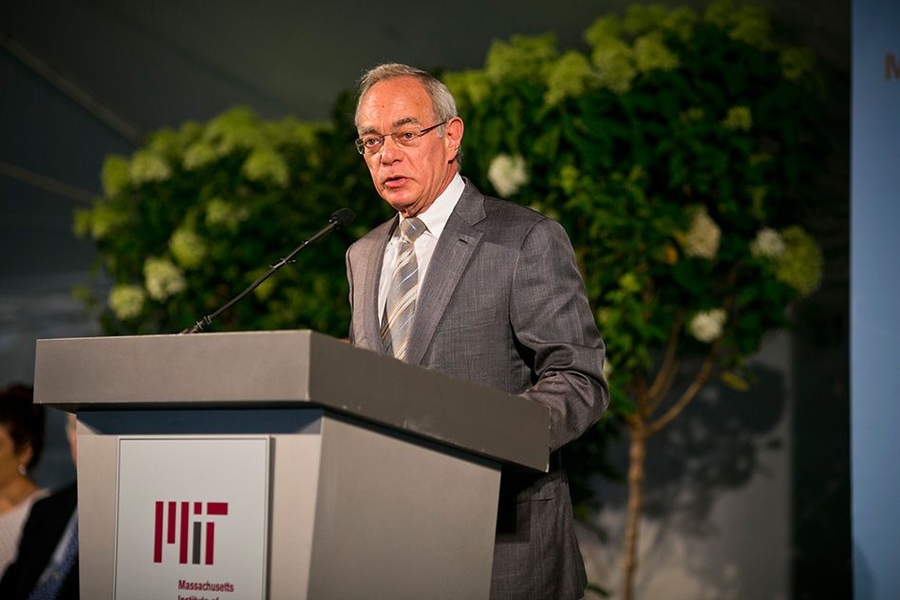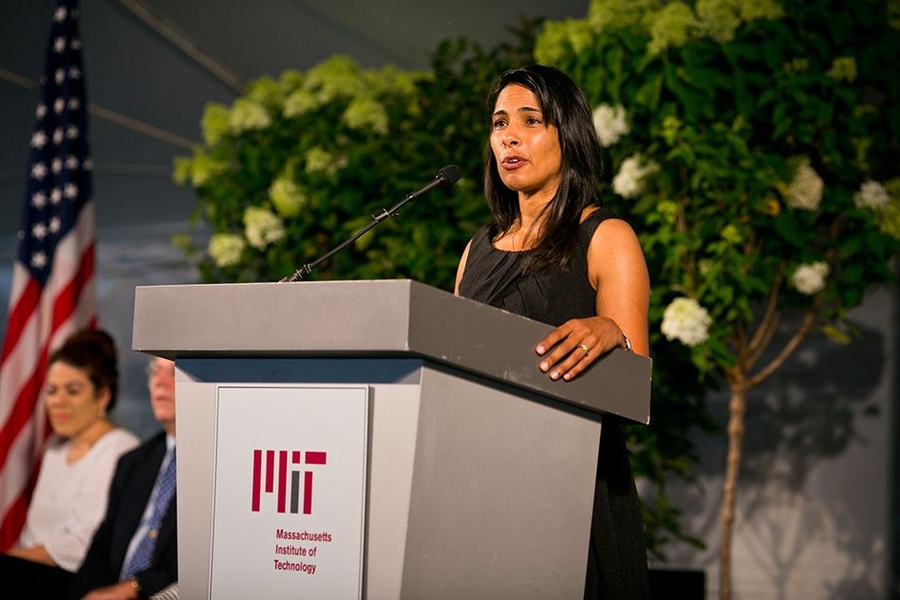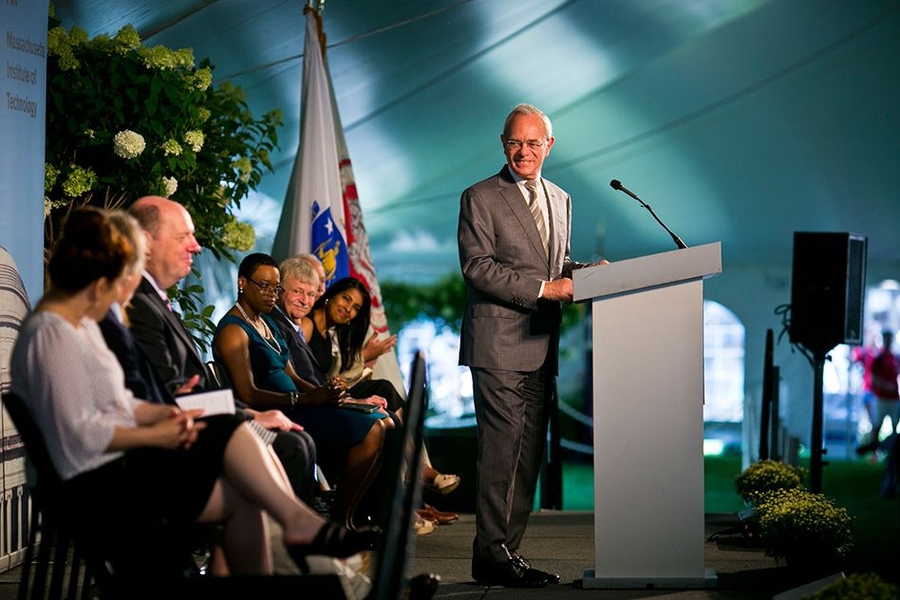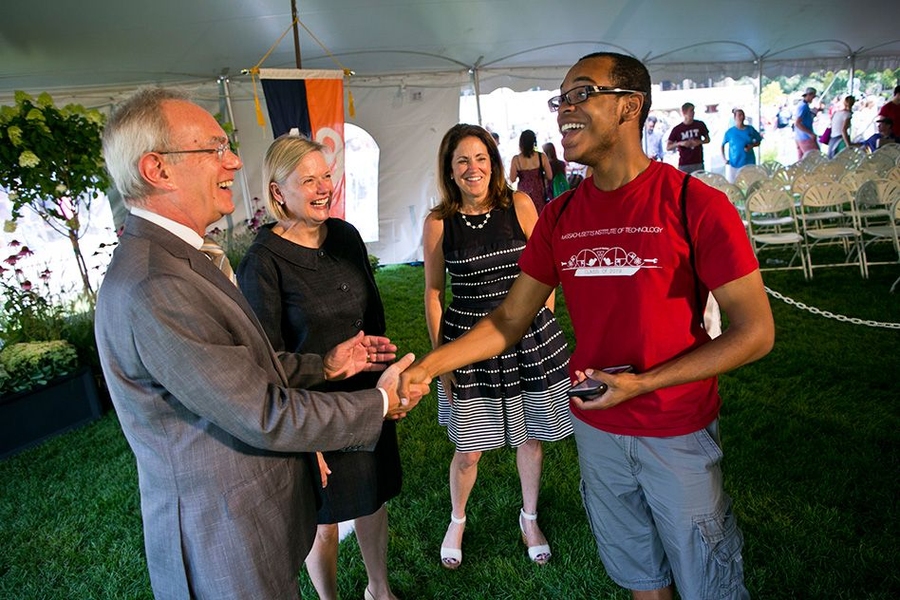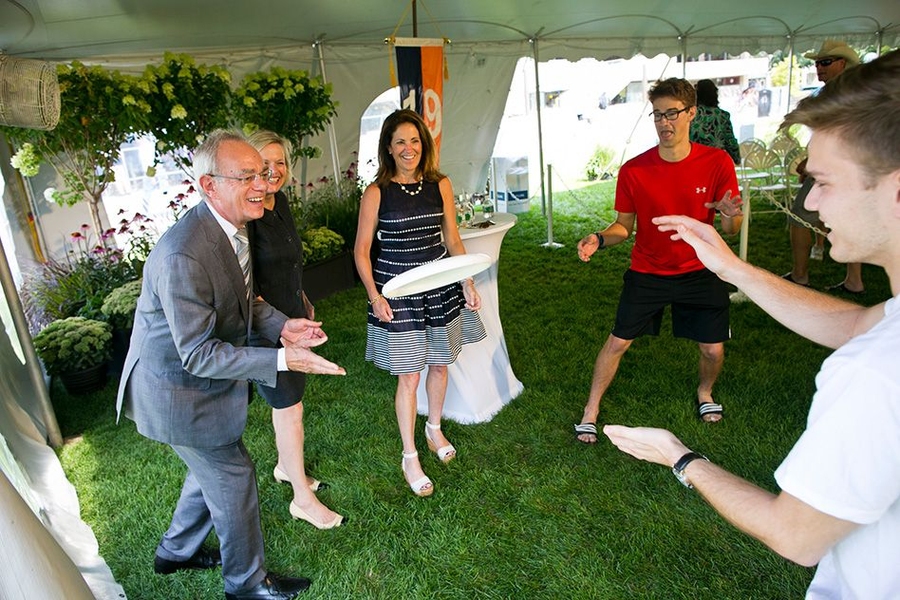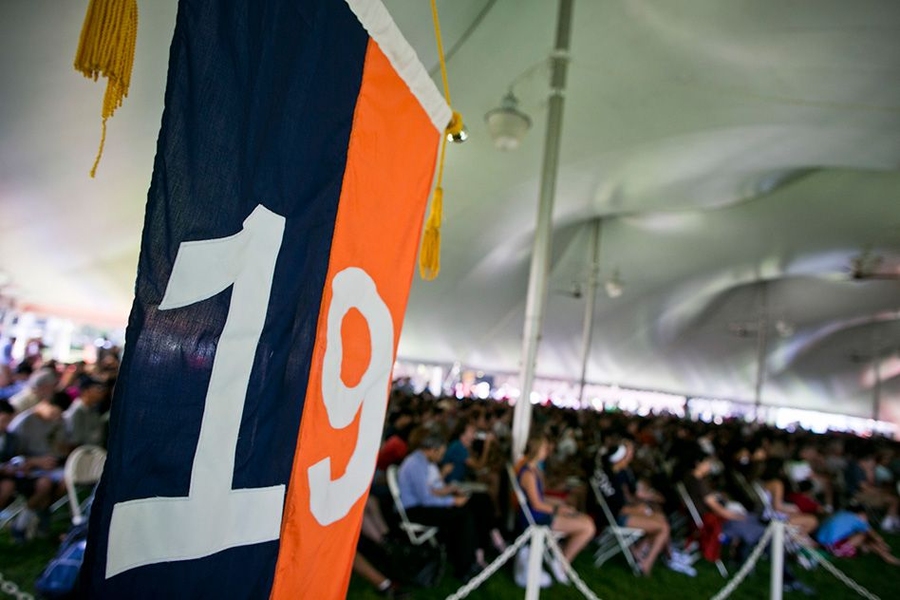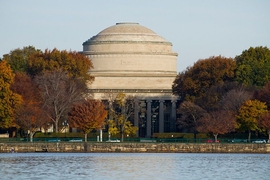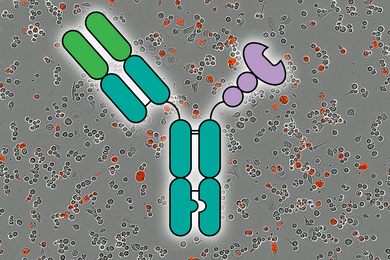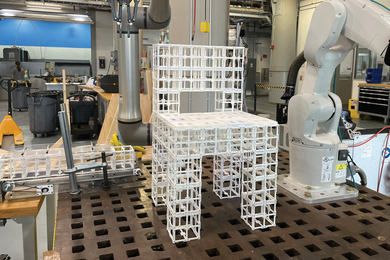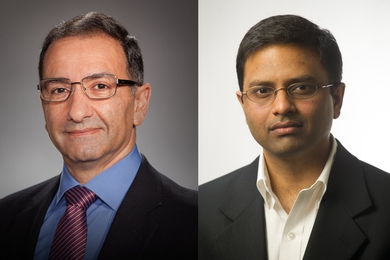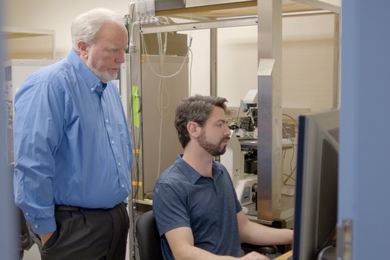MIT President L. Rafael Reif, greeting the Class of 2019 on a beautiful late-summer day that he said resembled the “year-round weather” in his native Venezuela, assured the incoming class that “you are joining a community that aspires to the highest standards of excellence and meritocracy.”
He added, “We challenge one another to do our best — and to understand our strengths and to identify and overcome our weaknesses. … In coming to MIT, you are joining a community that is not satisfied with just learning what is needed to get a degree, but rather one that pursues learning in order to make a big difference and a positive impact in the world.”
Under a large tent outside Kresge Auditorium on Monday, hundreds of incoming students also heard words of encouragement from three members of the faculty, who spoke of their own experiences in joining MIT.
“When I first came here as a student, I was excited, honored, and energized by the thought of all the great minds that had walked through the same halls before me,” said Sangeeta Bhatia, the John J. and Dorothy Wilson Professor of Health Sciences and Electrical Engineering and Computer Science. “I was also a little intimidated and a little unsure of myself. … I was unsure how I could stand out, and how I could be special.”
Bhatia said that she was “curious about a lot of things, and wanted to make the world a better place. It turned out that being interested in a lot of areas was exactly the quality that would make me stand out and be special.”
Now, she said, people “talk about the convergence of different fields on applied problems, like energy and transportation and human health. It’s a hot topic now, but it was new when I was starting out. I became fascinated by how computer manufacturing methods could help us understand the human body, and I would go on to become both an engineer and a doctor.”
Along the way, Bhatia said she also dabbled in glassblowing and ballroom dancing — and met her future husband.
“Here at MIT, I had access to everything I needed to make it all happen, all the instruments, the know-how, and the experience to draw upon and build from,” Bhatia said. “So being curious about a lot of things, being multidisciplinary, worked in my favor.”
“It turns out that each and every one of you are also special in ways that you may not yet even know about,” she added. “You may discover your passion here at MIT, or you may invent a whole new field that doesn’t even yet exist.”
Being admitted to MIT is like qualifying for the Olympics, she said — except that you’re still free to pick what “sport” you want to specialize in.
“Your job here is to figure out your sport,” Bhatia said. “All of you are writing your own MIT story, starting today.”
Kerry Emanuel, the Cecil and Ida Green Professor of Atmospheric Science, told the students that 40 years ago, “I was sitting where you’re sitting, feeling that interesting combination of fear and excitement.”
But Emanuel added that if the incoming students were expecting him to deliver pearls of wisdom, they might have picked the wrong one of Cambridge’s two major institutions of higher education. Here at MIT, he said, the faculty “don’t really hand you pearls of wisdom. What they’re really good at is inserting into your minds these irritating grains of sand, around which they expect you to form a pearl.”
Emanuel said that if students are interested in climate change — his own field — or potential solutions to it, “Boy, have you come to the right place!” MIT is at the forefront of such research, he said, as well as studies of “the next generation of sources of energy for our civilization.”
Melissa Nobles, a political scientist and the Kenan Sahin Dean of the School of Humanities, Arts, and Social Sciences, said that many MIT students are exposed to fields within SHASS only because the Institute requires eight such courses for graduation. But while the subjects are different, Nobles said, the analytical approach is much the same.
“The skills of inquiry and systematic analysis, two hallmarks of MIT education, are put to good use,” she said. One goal is to “get below the headlines and understand the deeper political, economic, and social forces that explain conflict. So in important ways, there’s a deep resonance between the science and engineering classes and many of our SHASS classes.”
“The world is an endlessly complicated, sometimes deeply distressing, but always wondrous place,” Nobles said. “Making your way in it requires a wide range of skills — leadership, critical thinking, effective communication, powerful self-expression, the ability to navigate ambiguity, and the ability to collaborate with others.”
“Have confidence in yourself,” Reif advised the first-year students. “We admitted you to MIT because every one of you has what it takes to succeed at MIT. We will demand a lot from you. We will also pay a great deal of attention to helping all members of the MIT family find their way. … Keep your mind open to new possibilities, and explore paths that you may not have expected.”
The process in the years ahead, Reif told the young students, “won’t always be easy, but it will be transformational.”
